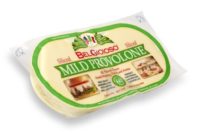Composite Materials Reduce Plastics on Tray Packaging

Innovation work is being done on a global scale to find renewable alternatives to plastic so that humanity can reduce the huge impact on the environment from our use of plastic. Many solutions are being tried but we still have no material with all of plastic’s great advantages without its devastating disadvantages. Packaging buyers concerned about the climate should consider the existing alternatives and move to composite materials.
Proven packaging solutions already exist that combine a renewable material such as paperboard with a small amount of plastic, reducing their climate impact by over 80% compared with traditional all-plastic packaging.
One common type of food packaging is the plastic tray, which then is sealed for its onward journey to the consumer. Instead of making the entire tray of plastic, an easy alternative is to replace the plastic with a composite material consisting of renewable paperboard with a thin plastic layer that supplies the barrier properties needed to protect against moisture, grease and aromas. The stiffness and strength required for the construction comes from the paperboard’s wood fibers, and the plastic’s barrier properties provide the functional finishing touch. This relatively easy change of materials reduces the packaging’s climate impact by over 80 per cent.
“Plastic is an excellent material for packaging. It is very formable and provides the seal we need in food packaging with high hygiene requirements,” explains Stefan Söderberg, sales manager, new products at Iggesund Paperboard. He is leading the market launch of Inverform, a composite material from Iggesund that can replace all-plastic trays and greatly reduce the trays’ climate impact.
Various types of packaging made of plastic-coated paperboard have existed for decades. But thanks to the latest advances in paperboard manufacture, they have gained better functionality and reduced their climate impact. The debate over fossil versus renewable materials and their respective climate impacts has further placed the combination of plastic and paperboard in an increasingly positive light.
“We’ve used bioplastics for about a decade in our manufacture of plastic-coated paperboard,” Söderberg said. “In production terms they’re generally acknowledged to be hard to handle, they have more limited applications than traditional plastics, and they’re also more expensive. Advances in bioplastics are constantly being made, because many companies are looking for a fossil-free bioplastic with properties that allow it to function smoothly in production – both for us as a material manufacturer and for those who manufacture the final packaging.”
While waiting for the materials manufacturers to find new fossil-free barriers, the market is demanding packaging made of paperboard coated with either traditional plastic or bioplastic.
Looking for a reprint of this article?
From high-res PDFs to custom plaques, order your copy today!






